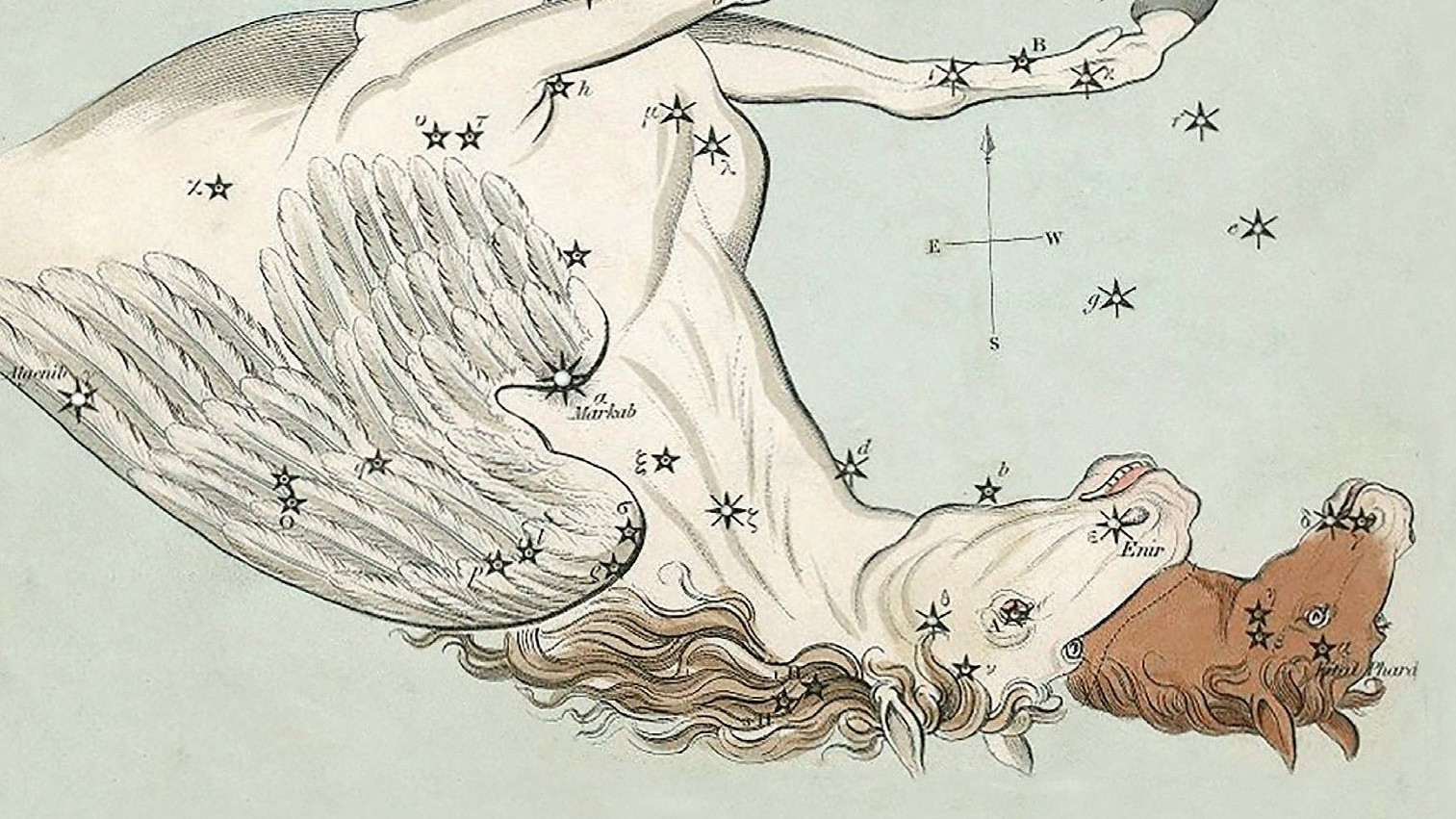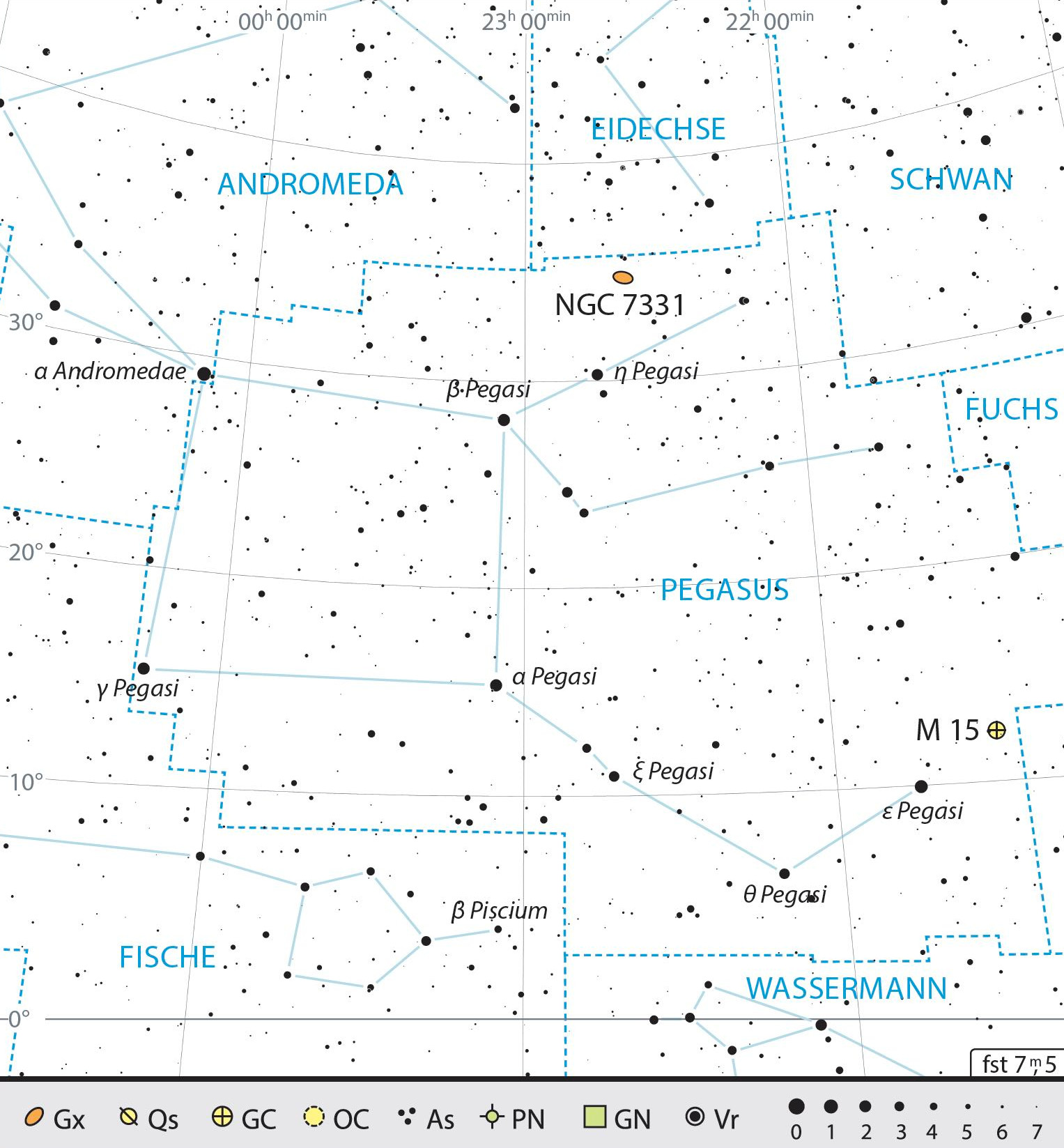Pegasus
The striking Great Square of Pegasus reveals a globular cluster if you are observing from an urban setting, or a great galaxy quintet under dark skies.
 Historic illustrations show the winged horse falling upside down from the sky.
The small equine head to the right belongs to the constellation of Equuleus. It represents the foal Celeris,
which was said to be either the son or brother of Pegasus.
Historic illustrations show the winged horse falling upside down from the sky.
The small equine head to the right belongs to the constellation of Equuleus. It represents the foal Celeris,
which was said to be either the son or brother of Pegasus.In the same way as the Winter Hexagon, the Spring Triangle and the Summer Triangle, the autumn sky has its own seasonal equivalent. Since the constellation of Pegasus takes the form of a square of four bright stars, it is often referred to as the Great Square of Pegasus. It forms the front part of the famous winged horse, while a series of stars stretching from α to ε Peg represents the horse’s neck and head. This creates the image of Pegasus falling from the sky, as depicted in historic star charts.
The reason for this fall could be that the winged horse was deliberately startled during a flight with Bellorophon. His rider, who had already defeated the fiery beast Chimera, became more and more arrogant with every heroic deed, and wanted to soar over Mount Olympus on Pegasus. But the gods didn't like that one bit, so they startled the horse with an insect, and Bellorophon was thrown off. The falling Pegasus was represented as a constellation in the night sky, while Bellorophon plummeted toward the ground. He is said to have crash-landed in Turkey, giving the town Tarsus its name (sole of foot).
Unit of measure or born from blood
Pegasus is part of the great cycle of legends surrounding Perseus, who wanted to save Princess Andromeda, daughter of Cassiopeia and Cepheus, from a huge sea monster. All the characters from this myth have lived in the autumn sky for thousands of years. In order to rescue Andromeda, Perseus needed the head of the horrible Medusa, because her gaze immediately turned everything to stone. After the hero had cunningly slain her, Pegasus was born from Medusa's blood.
The astronomers of ancient Mesopotamia focused on the geometric form of the constellation, rather than the legends of the winged horse. It was called Iku (the field), which was the Sumerians’ standard unit for measuring area. The square-shaped constellation is also to be found in the cube-shaped ark of ancient Babylonian flood myths.
M15 and galaxies
The highlight of the constellation is undoubtedly M15. Even with small binoculars, this globular cluster can be seen as a tiny dot – it is the collected light from 12.5 to 13 billion-year-old stars. The brightest suns are magnitude 12.6 bright and are therefore easily visible with a 100-mm aperture. An entry-level telescope is all you need for galaxy NGC7331. Owners of larger telescopes with access to dark skies are welcome to try the challenge of the very faint Stephan's Quintet group of galaxies.
 Outline map of the constellation of Pegasus with our observing recommendations. J. Scholten
Outline map of the constellation of Pegasus with our observing recommendations. J. ScholtenAuthor: Nico Schmidt / Licence: Oculum-Verlag GmbH
